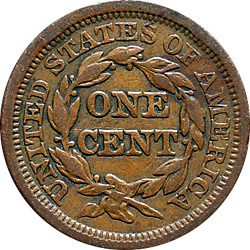Where will the coin drop?
 There are 2 circles. Once circle has a radius of 40 centimeters and the other circle is inside the first circle with a radius of 20 centimeters. If I randomly drop a coin with a radius of one centimeter inside the larger circle, what is the probability that the coin will land in the smaller circle without any part of the coin touching outside the circle.
There are 2 circles. Once circle has a radius of 40 centimeters and the other circle is inside the first circle with a radius of 20 centimeters. If I randomly drop a coin with a radius of one centimeter inside the larger circle, what is the probability that the coin will land in the smaller circle without any part of the coin touching outside the circle.
NOTE: this question is flawed as Brian in the solution discussion pointed out.
This section requires Javascript.
You are seeing this because something didn't load right. We suggest you, (a) try
refreshing the page, (b) enabling javascript if it is disabled on your browser and,
finally, (c)
loading the
non-javascript version of this page
. We're sorry about the hassle.
If the radius 1 cm coin, once dropped randomly, must lie entirely within the larger circle, then its center must lie within a circle of radius 4 0 − 1 = 3 9 cm.
For the radius 1 cm coin to also lie entirely within the smaller circle, which itself lies entirely within the larger circle, its center must lie within a circle of radius 2 0 − 1 = 1 9 cm.
Thus the probability that the radius 1 cm coin lies entirely within the smaller circle, given that it lies entirely within the larger circle, is
π ∗ 3 9 2 π ∗ 1 9 2 = 0 . 2 3 7 3
to 4 decimal places. This does not match any of the options, but is closest to 2 2 . 5 6 %.
@Nik Olson It's a bit unclear when you say that the coin is dropped randomly "inside the larger circle". If it must lie entirely within the larger circle then you get my answer, but if only the coin's center must lie within the larger circle then you get your's and Baby Googa's answer. I believe that my interpretation of "inside the larger circle" is more intuitive, so since we are essentially looking at where the center can lie I think the option of 2 3 . 7 3 % should be added and considered as the correct option. As mentioned above, I chose the 2 2 . 5 6 % option because it was the closest value to my calculation.